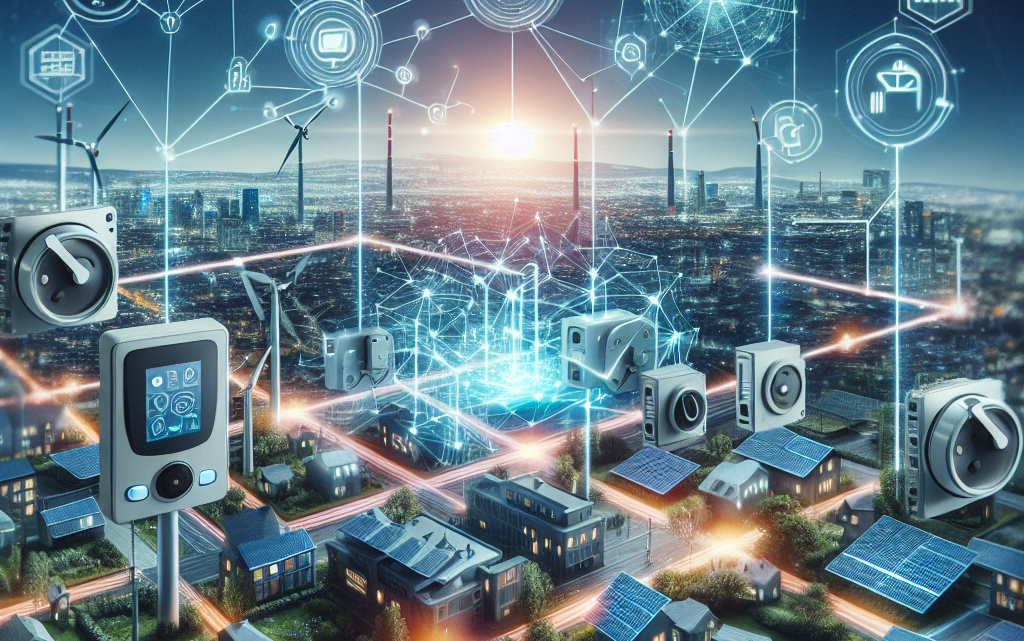The evolving energy landscape necessitates constant innovation to ensure sustainable and reliable power distribution. Enter smart grid technology, a game-changer, transforming traditional electrical grids into modern, efficient, and resilient systems. This article delves into the latest innovations in smart grid technology poised to revolutionize the sector.
What is Smart Grid Technology?
Before diving into the innovations, it is essential to understand what smart grid technology entails. A smart grid integrates digital communication and control systems with the existing electric grid. This enables real-time data exchange, automation, and control to optimize electricity distribution and consumption.
Advanced Metering Infrastructure (AMI)
1. Smart Meters
One of the pivotal advancements is the widespread deployment of smart meters. These devices provide detailed insights into energy consumption, allowing consumers to monitor and adjust their usage. Utilities can also use this data for accurate billing and detecting outages promptly.
2. Two-Way Communication
Traditional meters only recorded energy consumption passively. In contrast, smart meters support two-way communication, enabling real-time data exchange between the consumer and the utility provider. This facilitates better demand response and grid management.
Grid Edge Computing
1. Decentralized Energy Resources Management
Grid edge computing involves processing data closer to the source of generation and consumption. This is particularly useful for managing decentralized energy resources like solar panels, wind turbines, and energy storage systems. It enhances grid reliability and efficiency by ensuring localized control and optimization.
2. Enhanced Cybersecurity
With the increase in interconnected devices, cybersecurity becomes paramount. Grid edge computing helps in implementing robust security protocols, ensuring data integrity and protection against cyber threats.
Integration of Renewable Energy
1. Renewable Energy Forecasting
Accurate forecasting of renewable energy generation is essential for maintaining grid stability. Innovations in predictive analytics are making it easier to anticipate solar and wind energy output, thereby optimizing grid operations and reducing reliance on fossil fuels.
2. Battery Energy Storage Systems (BESS)
Battery energy storage systems play a critical role in renewable energy integration. They store excess energy generated during peak production times and release it during periods of high demand. This ensures a consistent energy supply and enhances grid stability.
Demand Response and Energy Management
1. Automated Demand Response (ADR)
ADR involves automated systems that adjust consumers’ energy usage based on grid needs. For example, during peak demand times, ADR systems can temporarily reduce heating or cooling loads in homes and businesses, thereby easing the strain on the grid.
2. Home Energy Management Systems (HEMS)
HEMS allow homeowners to manage and optimize their energy consumption through smart devices and applications. These systems can schedule energy-intensive tasks for off-peak hours, providing cost savings and reducing overall grid demand.
Artificial Intelligence and Machine Learning
1. Predictive Maintenance
AI and machine learning are revolutionizing predictive maintenance in smart grids. By analyzing data from sensors and meters, these technologies can predict equipment failures before they occur, allowing for timely maintenance and reducing downtime.
2. Grid Optimization
Machine learning algorithms are being used to optimize grid operations. They can analyze vast amounts of data to identify patterns and anomalies, enabling more efficient energy distribution and reducing losses.
Electric Vehicles and Smart Grids
1. Vehicle-to-Grid (V2G) Technology
V2G technology allows electric vehicles to interact with the grid, either by drawing power for charging or injecting stored energy back into the grid. This can help balance supply and demand, especially during peak hours.
2. Smart Charging Stations
Innovative smart charging stations manage the charging of electric vehicles in a grid-friendly manner. They can adjust the charging rate based on real-time grid conditions, ensuring efficient energy use and minimizing grid stress.
Conclusion
Smart grid technology is at the forefront of transforming how we generate, distribute, and consume electricity. From advanced metering infrastructure to AI-driven grid optimization, these innovations are paving the way for a more sustainable and resilient energy future. As the world continues to embrace renewable energy sources and electric vehicles, the evolution of smart grid technology will play a crucial role in the transition to a cleaner, more efficient energy landscape.

